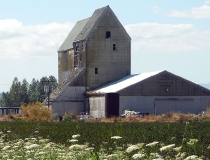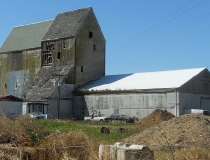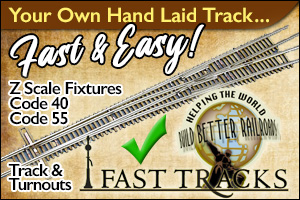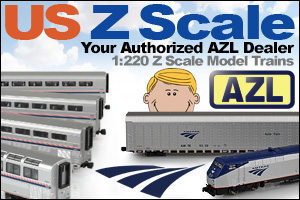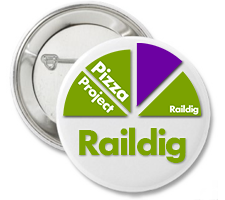RSLaser Kits
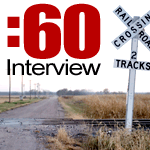 Over the past few years we’ve seen the rise of desktop, midsized and large format laser cutters making their way into the hands of Z scale kit designers. Machines that once would have been completely out of reach for the small business owner are now being used to create the modestly priced kits most of us enjoy on our layouts.
Over the past few years we’ve seen the rise of desktop, midsized and large format laser cutters making their way into the hands of Z scale kit designers. Machines that once would have been completely out of reach for the small business owner are now being used to create the modestly priced kits most of us enjoy on our layouts.
While certainly now more affordable, these machines are not really what we’d call inexpensive. In addition to the cost of the machines of course is the amount of training that goes into learning how to use these amazing machines.
So if even a modestly priced machine can easily cost over $10,000 and the time required learning the hardware and software is no small task… what drives these small business owners to continue to make the kits we now see as an everyday part of our Z scale world?
Last week I was speaking with one of our advertisers here at Ztrains.com, Rich Shepard of RSLaser, and he was showing me some prototype photos of a building he was thinking of turning into a new Z scale kit. Being generally curious about all things Z, I thought we’d talk a bit with Rich today about his work.
Tell us a bit about how RSLaser began, and when did you begin in Z scale?
Well about 8 or 9 years ago I was looking for something to do both in my spare time and for the future when I retired. Was doing some woodworking and got the laser for that to start. Having been a modeler all my life and having trains since I was like 5 or 6, it just kind of fell into place. At the time I was, and still do, N scale and was at a train show in Portland when a friend asked if I could cut a few things for him. So the first kit I designed was the Woss water tower and 45 some designs later we are still at it.
As for Z scale, not long after the Woss water tower I ran into Steve Erickson from Portland at another train show and he asked if I could do something in Z scale. That evening I went home and cut the first of my Z scale kits, the logging bunk house, and took it to the show the next day. After this the wife wanted Z scale trains so we now have some Z just waiting on time when I’ll build a layout were I can run Z and Nn3.
I have always gone with the smaller scales and am now coming out with some T scale kits soon.
We have several laser companies now working in Z scale, how do you differentiate your company?
I think the main thing is I don’t compress if at all possible. I’ve been told by some my kits look big and it is for that reason. Take the N scale Munson building and its fire escapes. Next to an N scale DPM model, our fire escapes are taller. I did some checking and DPM uses 9’-6” for the floor spacing where the standard is 12’ on the older buildings. As most had 9 to 10 foot ceiling then I added for the floor framing, HVAC and plumbing. I had to redesign the fire escapes to fit them. I have also been told that they look more real because of this.
Having been in construction all my life as a builder or working on the design side, I can only do it one way. I can’t do a building that could not be used in real life; they need to have room for inside stairs and all the other stuff that needs to go inside for them to work. So you’ll see no Disney-type buildings from me.
We spoke previously about a prototype building you recently saw and you were thinking of recreating this building as a Z scale kit (see below). Is there a selection method or overall plan you use when considering new kits?
Now that is a hard one. First off I do what I personally like, taking in all the design elements then I ask myself if there might be a market for it. If it’s a type of structure that’s been done before I look for things that make it different or stand apart from the others. As for the one you’re asking about, just about everyone does a grain elevator and they all are based on the same look and design. When I first saw this one I had to stop and get photos because it stands out from the rest while still serving the same purpose. So by doing this grain elevator as a kit, it will give the end user a choice so his layout will not look like all the others with the same structures, or can have multiple industries that don’t look cookie cutter stamped.
So I’m always on the lookout for the different.
You recently came out with the Munson Building, all laser etched brickwork on that one. How difficult is it to create all that brickwork in Z scale?
Ahh, brick work. The basic building was easy but the brick work drawing does take time to make sure all the bricks are right, not hard really, it just takes time. The biggest problem is the laser time when cutting bricks. Most people like the look of the brick but the cost due to the increased laser time scares them away.
What era buildings do you see the most call for; steam, transition, modern, etc.?
The old era question! I do get tired of the “Well it’s not my era I, do modern”. About the only time that works is if say, you’re doing the transition era so you can’t use anything built or designed after 1960 or so, or if you’re modeling a much, much earlier steam period. As I tell people, look around and you’ll see there are still more old buildings around than new. Even most big cities today have more old buildings than new.
A case in point is my Zelda’s Bed and Breakfast kit. I was going to call it the 1890s Hotel and got so much flak I changed the name to Zelda’s and by some miracle it now works in the modern era layouts. LOL… same building just a different name and paint job.
What I see is old buildings getting restored and renovated for different uses where new buildings get bulldozed when they outlive their usefulness.
From a marketing view point the more modern the design, the smaller the market is. In most scales the largest era modeled is still the transition era. Anything done to fit that era will have the best chance of selling which is why you’ll see more old building kits then modern kits.
When building Z scale laser kits, what kinds of general tips or advice would you give the modelers?
Just take your time as the parts can be small and fragile. As for the building of Z kits they are really no harder than any other scale and in some cases they’re actually easier!
Some of us are adding detail that was unheard of just a few years ago in HO much less in Z. Robert Ray is one for sure and it’s turning heads.
One thing I can’t encourage enough is to look at the other types of modeling for ideas that can carry over into model railroading. Start by picking up a few issues of FineScale Modeler. While it deals with plastic models, the tips and techniques are all the same. Also look at what the ship modelers are doing, most work in 1/700 scale and the work is amazing. They have ways of making water look so real it will blow your mind, as the military modelers and what they do on their dioramas all crosses over. That and an airbrush is the same in all scales and FineScale Modeler has some great articles on using them as well. Don’t just look at the railroad section or on line forums, there is lots of great info out there that works in all scales.
In general how do you see the overall health and future of Z scale modeling?
I think Z has a bright future! With more steam locomotives coming soon we will attract more people to Z scale. With what people like Robert Ray and the BAZ BoyZ train club are doing at the major trains shows, word is getting around… Z is in the books as more than a toy train set.
Also with the economy being what it is and people downsizing, there will be more people looking at the smaller scales if we can keep the pricing down. And with the great people and modeling being done in Z they have to be impressed.
Category: Blog



